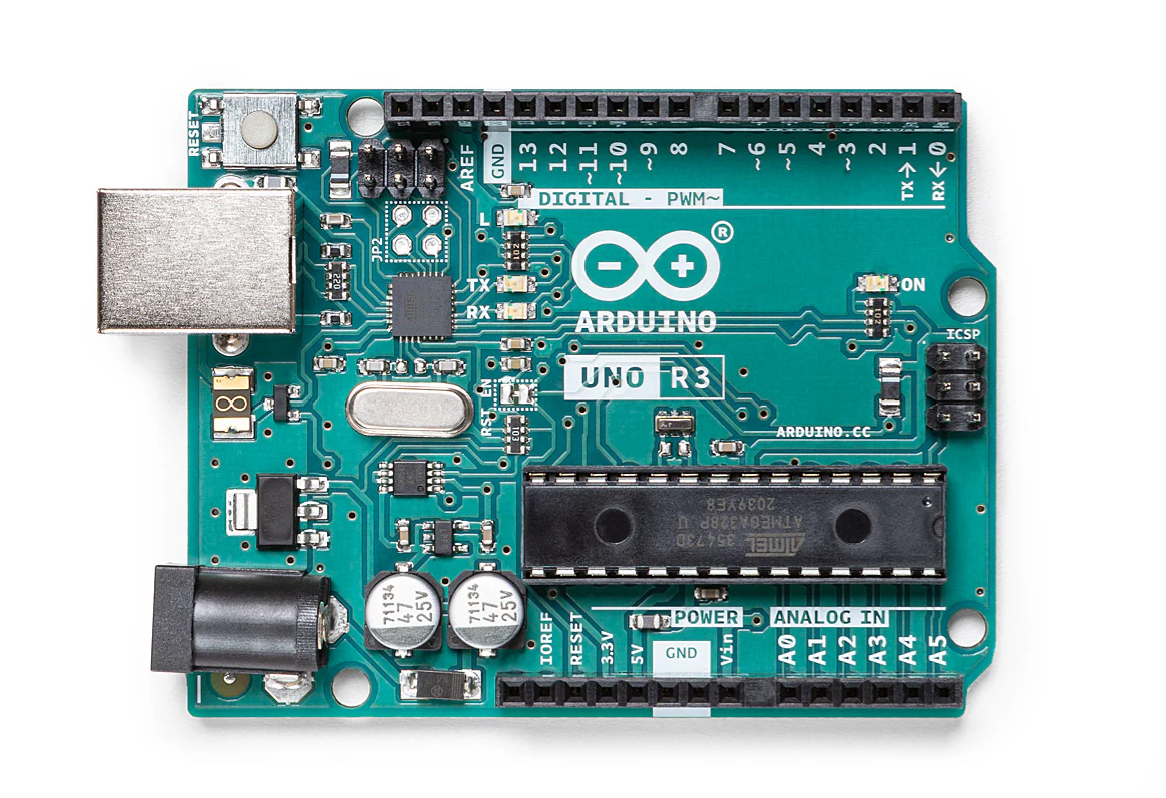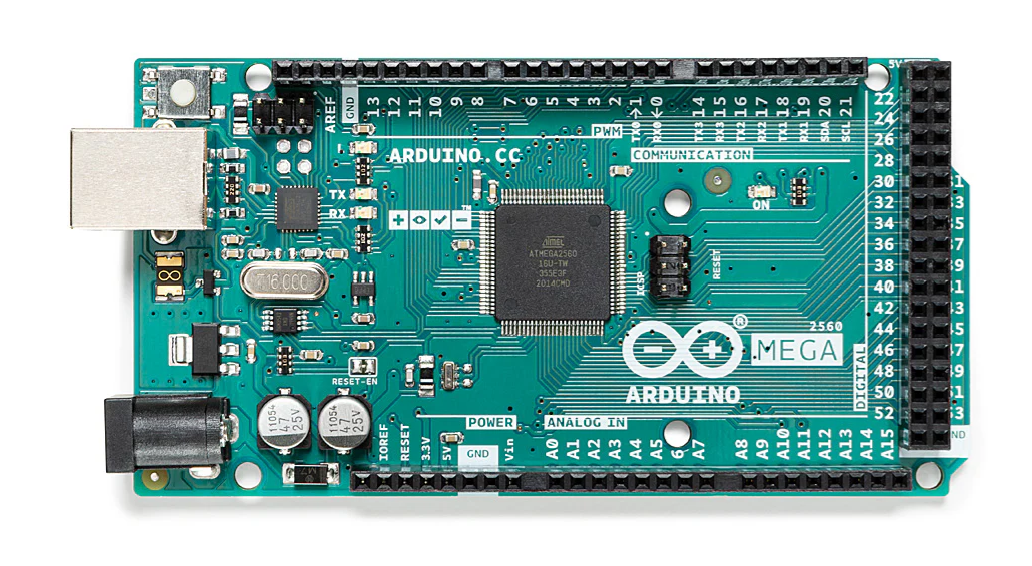What is Arduino?
Arduino is an open-source hardware and software company most famous for its development kits and boards. The Arduino platform is widely used by electronics makers and engineers due to its ease-of-use and cost.
Arduino has many microcontroller units and various hardware products such as shields and different educational kits. Click here for a complete list of Arduino has to offer.
The 3 main microcontrollers that I believe are the easiest to use are the Arduino Uno, Arduino Nano, and Arduino Mega.
These three families are the perfect start to any microcontroller project.
If you need a basic microcontroller, start with the Arduino Uno Rev 3 for your first project.
The Arduino Uno has:
14 digital I/O pins (6 PWM output)
6 PWM digital I/O’s
6 Analog Input pins
32 kB of flash memory
2 kB of SRAM
1 kB of EEPROM
16 MHz clock speed
For projects that require a smaller form factor, consider the Arduino Nano.
The Arduino Nano has:
22 digital I/O pins (6 are PWM outputs)
6 PWM outputs
8 Analog IN pins
32 kB of flash memory (2 kB used by bootloader)
2 kB of SRAM
1 kB of EEPROM
16 MHz clock speed
The Arduino nano seems to have similar electrical specifications to that of the Arduino Uno. When looking at the differences, I don’t see much from a performance perspective other than a barrel jack connector is not provided. Sourcing a 12 V supply to the Arduino Uno will be easier in this case for 12 V battery applications. For Arduino Nano, you will have to get more creative with the electrical connection for using a 12 V source. Other than that, the microcontrollers seem to be the same.
For applications requiring an extensive amount of I/O capability, consider the Arduino Mega 2560 Rev 3.
The Arduino Mega is a visibly larger form factor with much more I/O support.
The Arduino Mega has
54 digital I/O pins (15 of which are PWM output)
16 Analog Input pins
256 kB of flash memory (8 kB used by bootloader)
8 kB of SRAM
4 kB of EEPROM
16 MHz clock speed
The Arduino Mega is useful for applications that require many I/O pins. Projects that have many sensors, peripherals, with various control signals will work well with the Arduino Mega.
If you want a simple tutorial to get started with one of these microcontrollers, see Robonyx’s video on “Arduino is easy, actually.”


